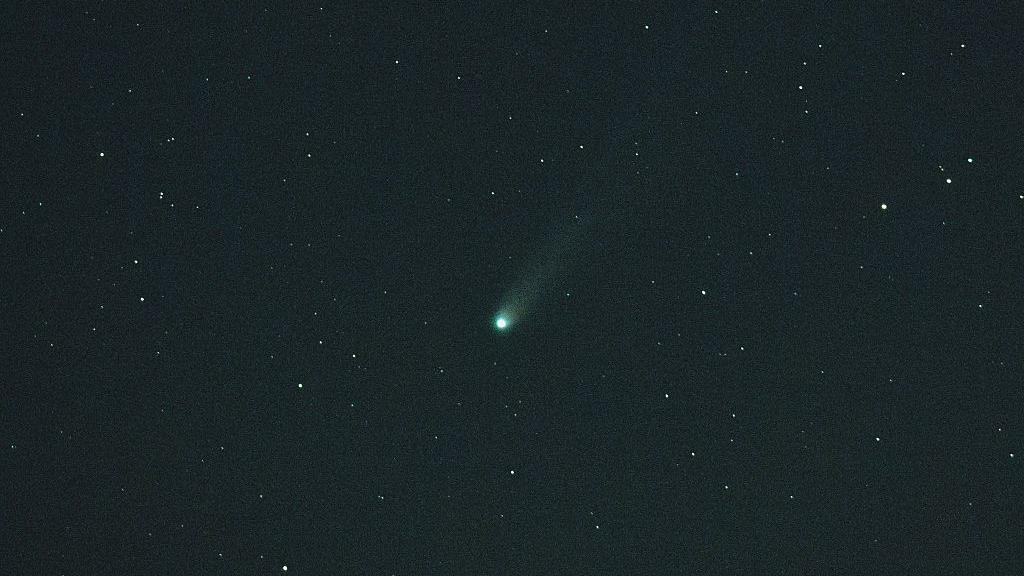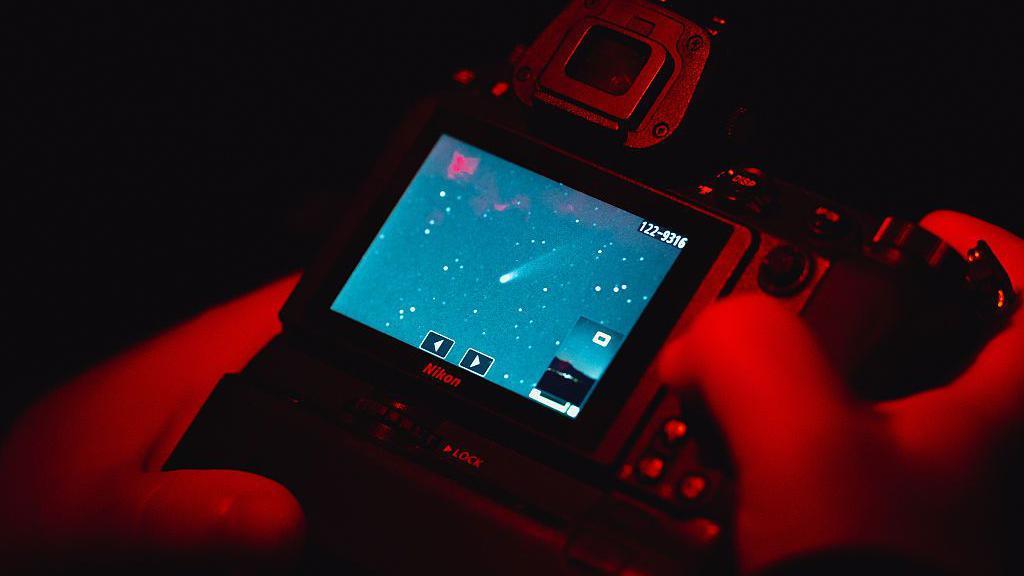Have you spotted a comet in the sky this week?

- Published
Have you seen a bright, fuzzy object in the sky this week? Something that looked like a greenish cosmic snowball?
If the answer is yes, you may have spotted Comet C/2025 A6 (Lemmon).
The Comet is currently the closest to Earth it has been in 1,300 years!
And scientists say between now and the start of November you may be able to spot it in the night sky.
Have you seen the 'comet of the century'?
- Published16 October 2024
Rare comet set to appear for first time in 160,000 years
- Published14 January
Meteors, meteorites, asteroids and comets - what's the difference?
- Published13 February 2023
What is Comet C/2025 A6 (Lemmon)?

Comet C/2025 A6 (Lemmon) was first detected in January this year by star gazers at the Mount Lemmon Survey, in Arizona and has been monitored by astronomers ever since.
Comets are icy, dusty objects.
As they move closer to the Sun the warmth of it of causes the ices on their surface to go from a solid to a gaseous state releasing dust and gas particles.
This is what then creates the glowing tail you can spot in the sky.
How can I see it?

Whilst Comet C/2025 A6 (Lemmon) came closest to the Earth on Tuesday when it was 56 million miles (90 million km) away, it is expected to be visible into the start of November.
So, if you haven't spotted the comet yet, grab your binoculars or telescope - you still have a chance!
"Comet Lemmon is pretty much at its best visibility right now," said Dr Robert Massey, deputy executive director of the Royal Astronomical Society.
Comet C/2025 A6 (Lemmon) should be easy to see with binoculars or a telescope after sunset over the next week or so, however scientists say you may even be able to see it without them if the sky is very dark.
Sharing tips on how to spot it, Dr Robert Massey added: "It will stand out as a fairly bright, fuzzy object."
